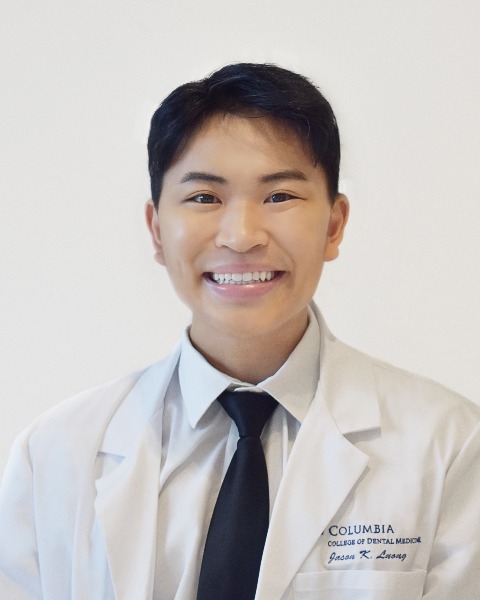Anatomy Education: Teaching Methods & Innovations Posters
Poster: Anatomy Education: Teaching Methods & Innovations Posters
142 - A Global Study on the Impact of Gender and Single-gender Education in Professional Identity Formation
Saturday, March 23, 2024
5:00pm - 7:00pm US EDT
Location: Sheraton Hall
Poster Board Number: 142
There are separate poster presentation times for odd and even posters.
Odd poster #s – first hour
Even poster #s – second hour
Co-authors:
There are separate poster presentation times for odd and even posters.
Odd poster #s – first hour
Even poster #s – second hour
Co-authors:
Aleksandra Synowiec - University of Cambridge; Akari Matsuoka - Tokyo Women's Medical University; Maria Ruiz - University of Barcelona; Dana Stearns - Harvard Medical School; Cecilia Brassett - University of Cambridge; Shuji Kitahara - Tokyo Women's Medical University; Carol Kunzel - Columbia University College of Dental Medicine; Geoffroy Noel - University of California San Diego; Junji Haruta - Keio University; Misa Hyakutake - Keio University; Anette Wu - Columbia University Vagelos College of Physicians and Surgeons

Jason Luong
Dental Student
Columbia University College of Dental Medicine
New York, New York, United States
Presenting Author(s)
Abstract Body : Introduction & Objective
Professional identity (PI) is a key aspect when working in healthcare. Additionally, PI formation is known to be a complex phenomenon influenced by numerous factors and exposures. The objective of this study is to investigate any disparities in PI levels between genders as well as compare these differences in women-exclusive institutions compared to coeducational institutions.
Materials and Methods
Participants were recruited from an anatomy faculty-led international program (International Collaboration and Exchange Program; ICEP) from 2022 to 2023. An online, validated survey was distributed to 282 students within the program to assess their self-perceived levels of PI. The Professional Self Identity Questionnaire (PSIQ) and its validated version in Japanese were used. Statistical analysis was performed using R.
Results
A global comparison between genders did not reveal statistically significant mean differences in total PI levels. However, in an analysis comparing students from Tokyo Women’s Medical University, an exclusively female institution, to those from coeducational institutions, students who studied at the coeducation institutions were noted to have higher levels of PI (p < 0.001). A notable difference is also observed upon comparing PI levels between students from Japanese schools and their global counterparts. Japanese students demonstrated significantly lower levels of PI compared to the global cohort (p < 0.001).
Conclusion
There was a significant difference in PI levels among students at a women-exclusive institution compared to coeducational institutions. This observation suggests a potential role as a determining factor in the construction of PI, but further investigation is required to confirm this discovery. We did not, however, find an overall significant difference in PI levels between genders.
Significance and Implication
The preliminary results of this study not only revealed a unique aspect of women-exclusive institutions but also cultural differences that impact PI on the national level, adding an insight into the complex PI formation. The results are very promising, but further studies should be done to obtain larger cohorts, preferably with more single-sex institutions, with attention to other factors that may have influenced the result.
Professional identity (PI) is a key aspect when working in healthcare. Additionally, PI formation is known to be a complex phenomenon influenced by numerous factors and exposures. The objective of this study is to investigate any disparities in PI levels between genders as well as compare these differences in women-exclusive institutions compared to coeducational institutions.
Materials and Methods
Participants were recruited from an anatomy faculty-led international program (International Collaboration and Exchange Program; ICEP) from 2022 to 2023. An online, validated survey was distributed to 282 students within the program to assess their self-perceived levels of PI. The Professional Self Identity Questionnaire (PSIQ) and its validated version in Japanese were used. Statistical analysis was performed using R.
Results
A global comparison between genders did not reveal statistically significant mean differences in total PI levels. However, in an analysis comparing students from Tokyo Women’s Medical University, an exclusively female institution, to those from coeducational institutions, students who studied at the coeducation institutions were noted to have higher levels of PI (p < 0.001). A notable difference is also observed upon comparing PI levels between students from Japanese schools and their global counterparts. Japanese students demonstrated significantly lower levels of PI compared to the global cohort (p < 0.001).
Conclusion
There was a significant difference in PI levels among students at a women-exclusive institution compared to coeducational institutions. This observation suggests a potential role as a determining factor in the construction of PI, but further investigation is required to confirm this discovery. We did not, however, find an overall significant difference in PI levels between genders.
Significance and Implication
The preliminary results of this study not only revealed a unique aspect of women-exclusive institutions but also cultural differences that impact PI on the national level, adding an insight into the complex PI formation. The results are very promising, but further studies should be done to obtain larger cohorts, preferably with more single-sex institutions, with attention to other factors that may have influenced the result.

